

Buffalo State Asylum for the Insane
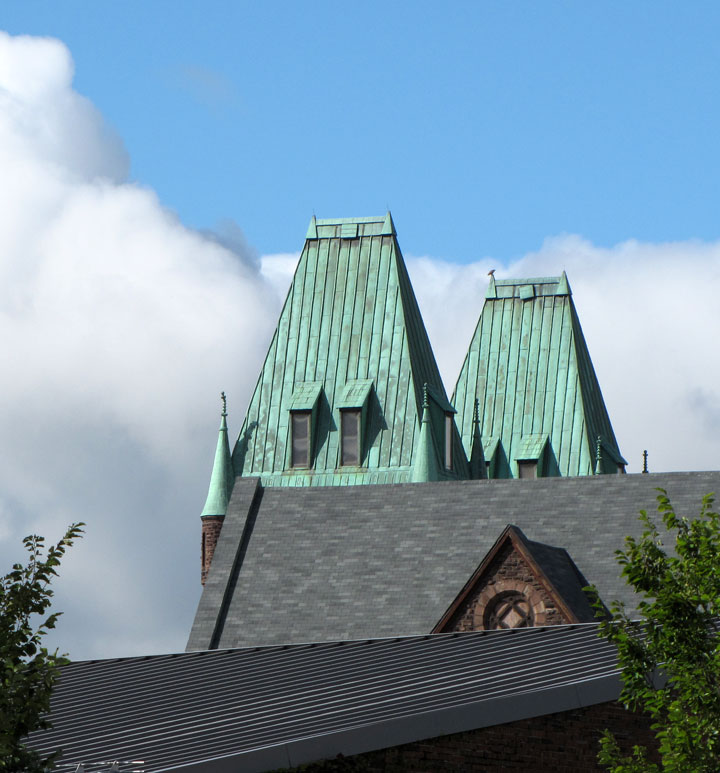
State Asylum
H.H. Richardson Complex is a recently-coined name for the Buffalo State Asylum for the Insane, a large Medina red sandstone and brick hospital that stands on the grounds of the present day Buffalo Psychiatric Center in Buffalo, New York. The official name for the complex (at least technically so) remains as the Buffalo Psychiatric Center (originally Buffalo State Asylum for the Insane, and, later, known as Buffalo State Hospital). It was designated a National Historic Landmark in 1986.
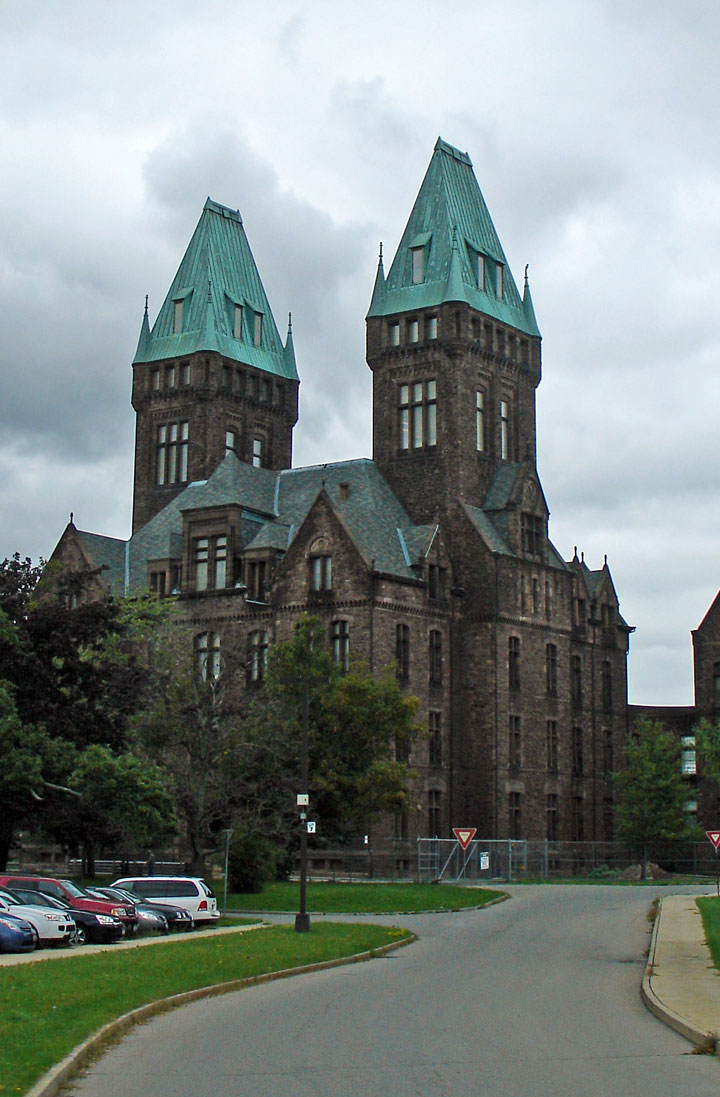
The hospital buildings were designed in 1870 in the Kirkbride Plan by architect
Henry Hobson Richardson with grounds by landscape architect Frederick Law
Olmsted. The complex consists of a central administrative tower and five
pavilions or wards progressively set back on each side, for eleven buildings
total, all connected by short curved two-story corridors. Patients were
segregated by sex, males on the east side, females on the west. The wards housed
mental patients until the mid-1970s. The central administration building was
used for offices until 1994. In 1973, the Asylum was added to the National
Register of Historic Places and in 1986, it was designated a National Historic
Landmark.
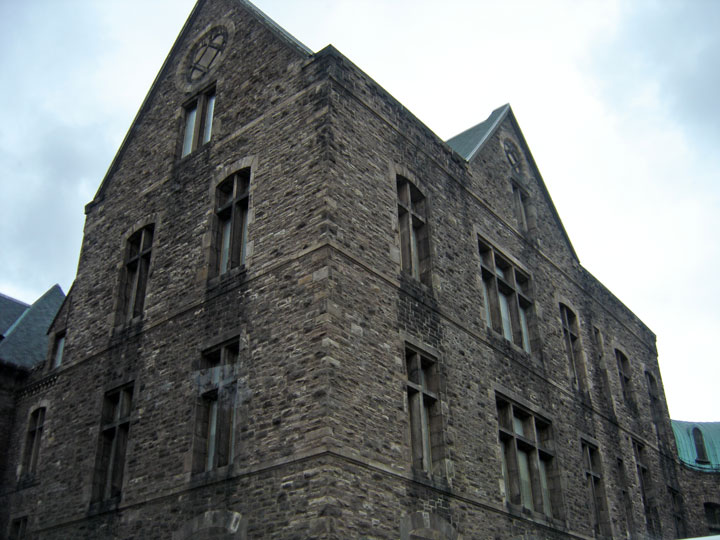
The complex, the largest commission of Richardson's career, marks the advent of
his characteristic Richardsonian Romanesque style. It has been the subject of a
long-term preservation campaign. Nevertheless, three pavilions on the east side
were demolished in the 1970s to make way for newer psychiatric facilities. The
grounds north the building have been occupied by Buffalo State College since the
1960s. Meanwhile, extant buildings have been allowed to deteriorate, some
dangerously so.
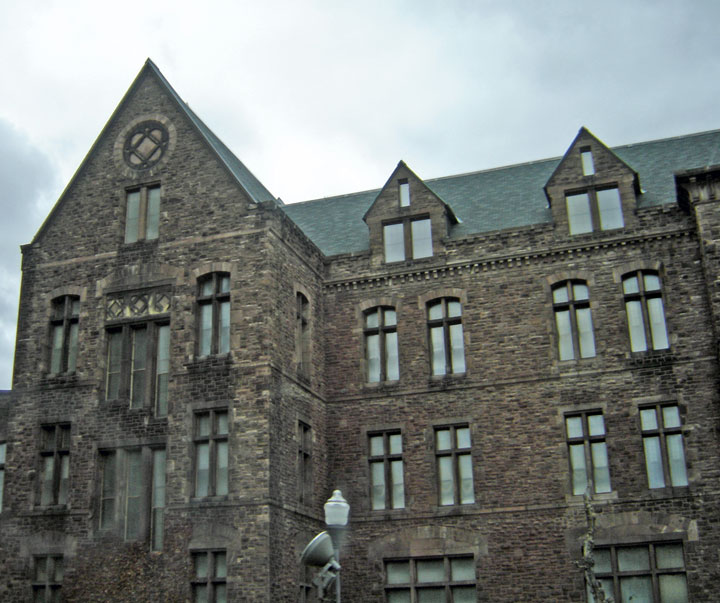
A successful lawsuit filed by the Preservation Coalition of Erie County (renamed
Preservation Buffalo Niagara in October 2008) forced the State of New York to
commit $100 million to its rehabilitation. As a result, the State established
the Richardson Center Corporation to rehabilitate the complex. Their workers
have installed a fence surrounding the perimeter of the complex and have sealed
or fenced all ground-level entrances to the complex, to protect it from vandals.
A highly trained Peace Officer is on duty at all times to conduct regular
patrols of the area to prevent and deter crime. Local volunteers maintain
spotlights on the central towers, providing dramatic illumination at night.
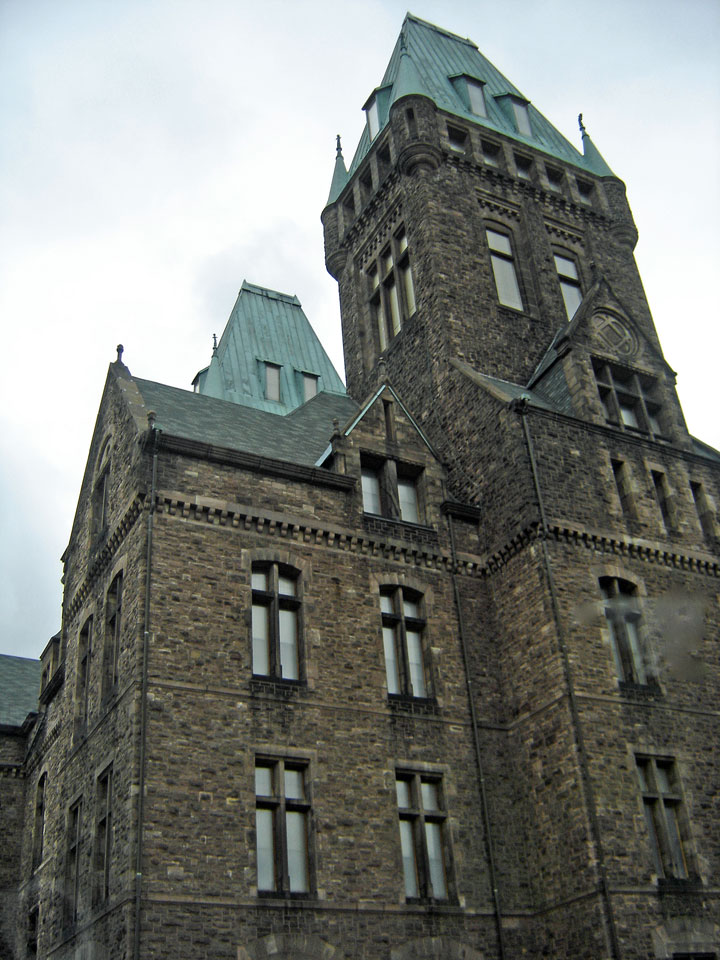
At a public meeting in November 27, 2007, the Richardson Center Corporation
presented updates on the progress of the project, including a finished Historic
Structures Report, which offers a detailed analysis of structural and physical
conditions at the complex.
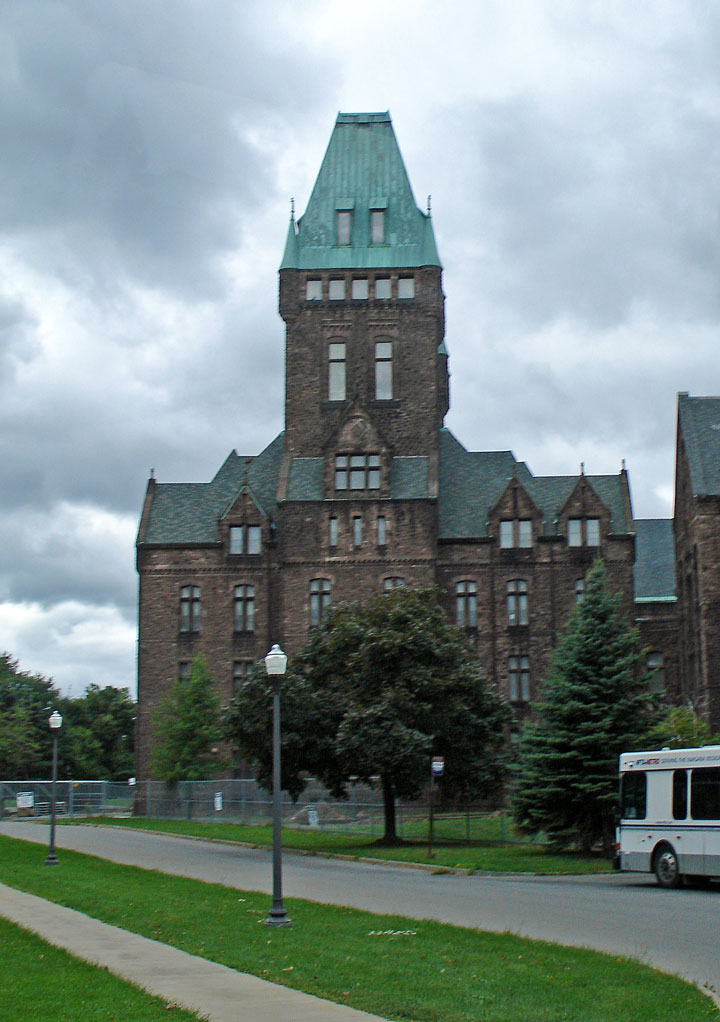
On March 5, 2008, initial repairs were begun on the most severely damaged
buildings, including the roof and down-spouts.. Further
repairs—stabilizations for Building 43, roof repairs for Buildings 10 & 45, and
stabilization of the corridor linking buildings 39 & 40, which is currently so
damaged that one sees straight through the corridor in places—are underway.

On April 10, 2010 a two-alarm fire was in progress as reported by WIBV Channel 4
in Buffalo. The cause of the fire was under investigation. Damage was estimated
at $200,000.
Text from Wikipedia
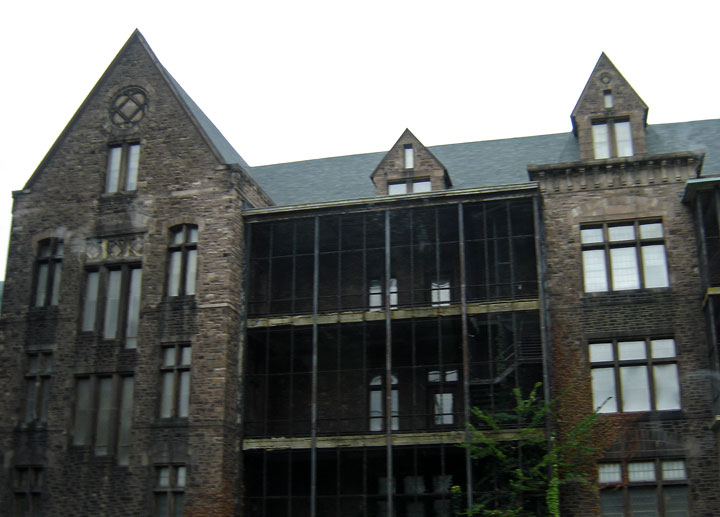
damaged building